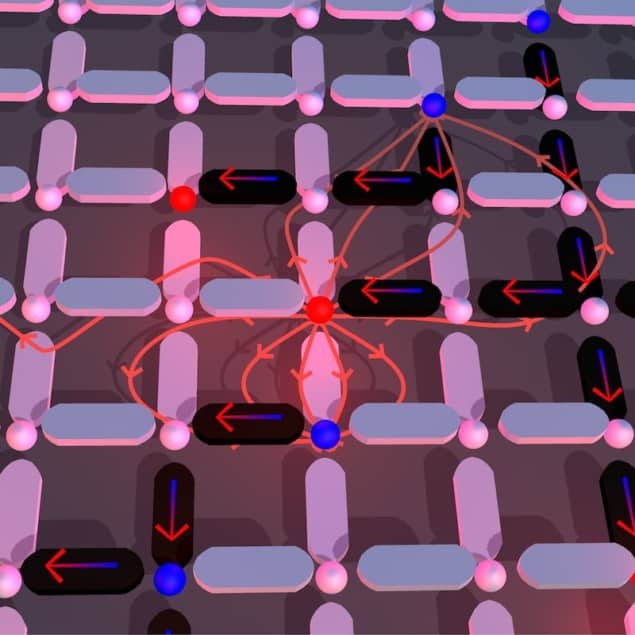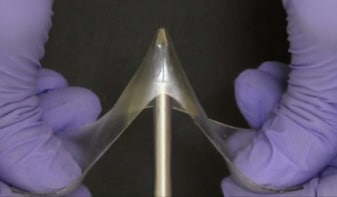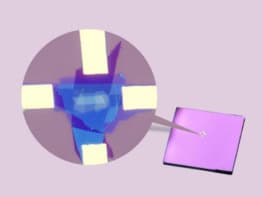
Researchers in the US, Switzerland and Finland say they have imaged magnetic monopoles (magnets with only one pole) in an artificial spin ice material. The result, obtained at the Advanced Light Source (ALS) at the Lawrence Berkeley National Laboratory (LBL), is not only important for fundamental physics studies, it will be of interest for developing spintronics and information technology devices of the future.
Magnetic monopoles were first predicted by Paul Dirac in 1931 in his work on quantum electrodynamics, but they have never been seen in nature. They are elementary particles that act as isolated magnetic north and south poles and are the magnetic analogues of electric charges.
Topological excitations
In recent years, researchers have found a classical analogue to these elusive particles in topological excitations within pyrochlore spin ice systems. These are a class of geometrically frustrated magnetic materials in which the disorder of the magnetic moments at low temperatures is exactly the same as the proton disorder in water ice (which explains where their name comes from). They contain rare-earth ion moments that occupy the corners of a tetrahedral structure and local constraints mean that these moments obey the “ice rules”: two of the moments point into, and two of the moments point out of, the tetrahedron.
When each of these dipole moments is replaced by a dimer of two opposite magnetic charges, configurations called Coulomb phases can be obtained. These act as isolated magnetic charges that behave like isolated electric charges. “Observing such magnetic charges thus proves that we are dealing with emergent magnetic monopoles,” explains study lead author Alan Farhan of the LBL and the Paul Scherrer Institute.
A single Ising-type macrospin
Farhan and colleagues say they have now succeeded in fabricating a 3D and macroscopically degenerate artificial spin ice in which thermally-driven moment fluctuations exist. They have been able to image these fluctuations for the first time, something that has allowed them to characterize the temperature-dependent behaviour of these defects, which indeed seem to behave like isolated magnetic charges.
The new spin ice consists of elongated nanomagnets lithographically placed onto a square lattice, itself placed on a pre-etched silicon substrate. Each nanomagnet is small enough to be mono-domain so that the magnetic moments in each magnet can only point in one of two possible directions along each of the magnet’s long axis. “Each nanomagnet thus represents a single Ising-type macrospin,” explains Farhan.
The researchers grew one set of nanomagnets on top of a pre-etched plateau and another set on the base of the substrate. This generates a quasi-3D spin system, they say.
PEEM
They imaged and tracked the movement of emergent magnetic monopoles in their structure and studied the behaviour of these monopoles as a function of temperature using synchrotron-based photoemission electron microscopy (PEEM) at the ALS.
These spin-ice monopoles have very different origins to those predicted by Dirac and are thus unlikely to help in the development of grand unified theories and string theories, but they are nonetheless crucial for fundamental physics studies. “Being defects that can be imaged, tracked and eventually manipulated at the nanoscale, they will also be important for researchers working in the fields of spintronic and future information technologies,” says Farhan.
The team, which includes researchers from the University of California at Santa Cruz, Aalto University, the University of Innsbruck, the University of California at Berkeley and ETH Zurich, says that it will now be looking further into the low-temperature physics of these artificial spin ice systems. “This future work will aim to answer the long-standing question about the true spin ice ground state,” Farhan tells Physics World.
Full details of the research are published in Science Advances 10.1126/sciadv.aav6380.



